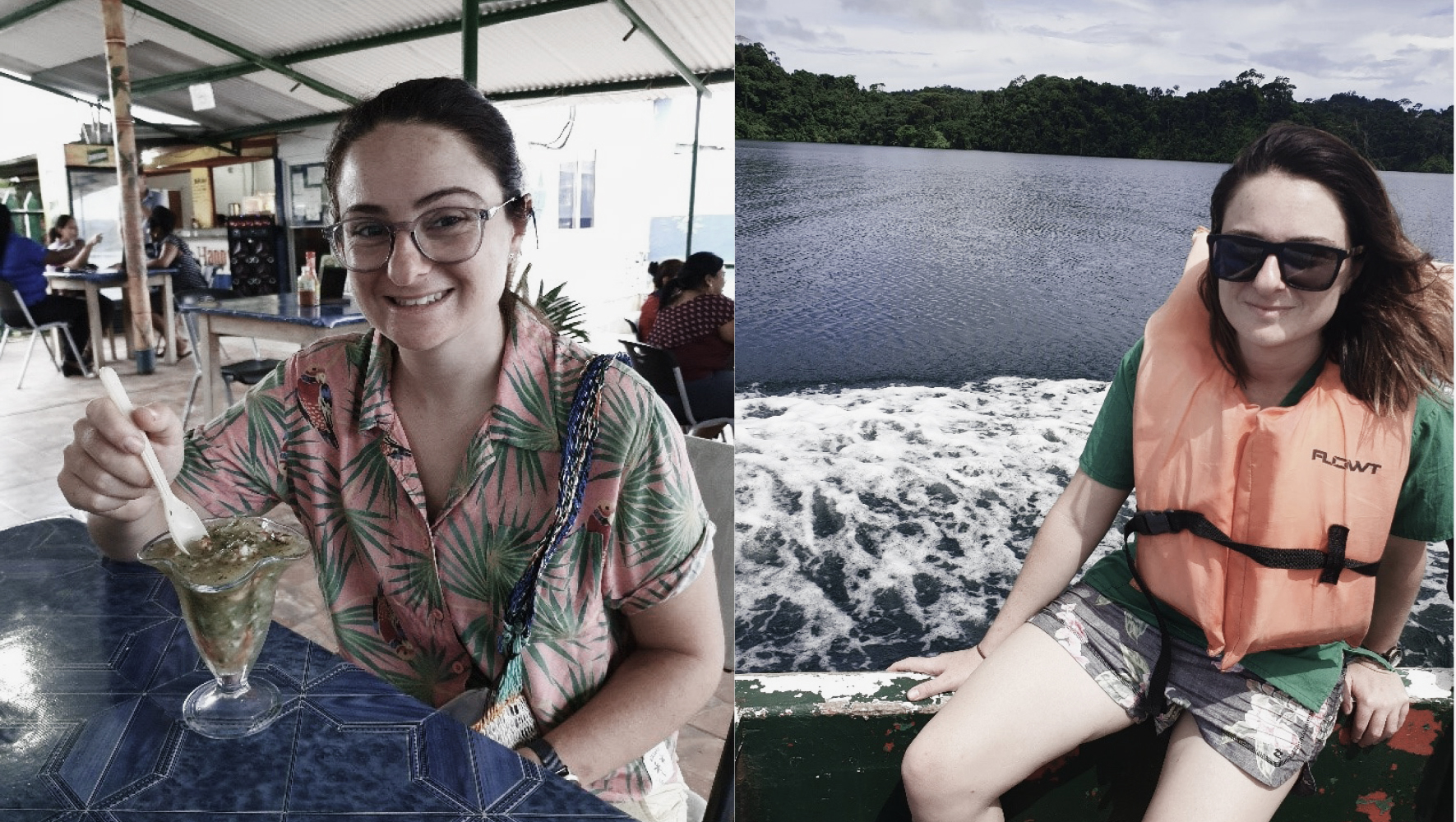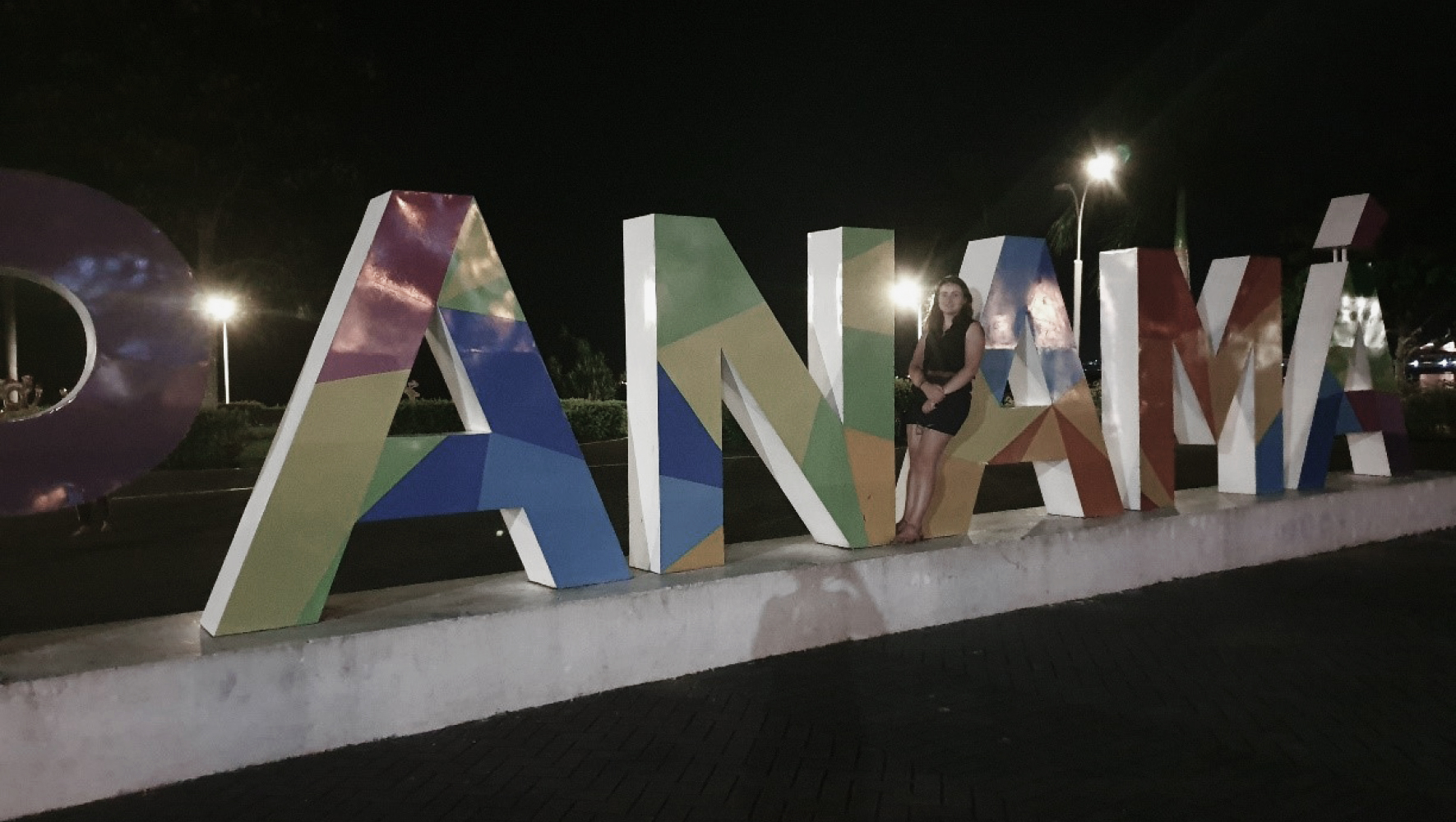Future Focus: Jessica Cusumano
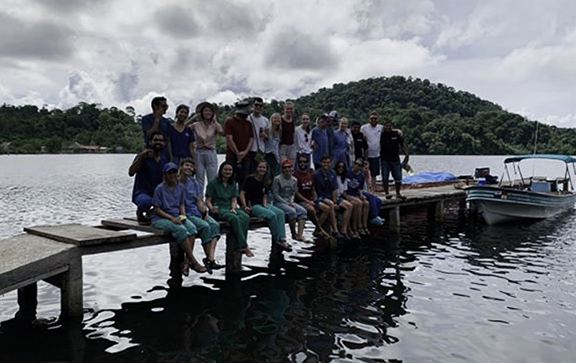
Jessica Cusumano was one of the five recipients to receive our FutureFocus grant for 2019, and at the time was a final year medical student from the University of Wollongong. Jessica received $2 500 to put towards her overseas elective in Panama. Her placement involved working with the Floating Doctors organisation where she visted an array of clinics across remotely located communities in Bocas del Toro to provide medical aid, before moving onto Changuinola where she worked alongside the director of the province's HIV clinic and program
Read a full account from Jessica about her incredible journey below.
General Practice in the jungle – Final year medicine elective in Bocas Del Toro, Panama
As soon as I heard of the Floating Doctors, a medical aid organisation based in Bocas Del Toro in Panama, I knew that is what I wanted to do for my elective placement during my final six weeks of Medical School. The Floating Doctors brings primary health care to underserved remote communities in the Bocas Del Toro Archipelago in Panama and relies on the generosity of volunteers to both fund and staff their clinics, alongside their limited permanent staff. The Floating Doctors deploy mobile medical, dental and veterinary clinics over more than 7 000 square miles of jungle covered mountains and mangrove maze islands in the Bocas Del Toro Province, and is often the only medical service available to predominantly indigenous Ngäbe communities. The organisation is most often challenged by the absence of sanitation, electricity, clean water, as well as patients who live in poverty and have poor health literacy. Despite these challenges, the Floating Doctors team have been able to provide primary healthcare to more than 60 000 patients.
I was originally due to spend six weeks with the Floating Doctors however three weeks out from my departure, the Floating Doctors contacted me to advise they unfortunately did not have enough volunteers for the final four weeks of my elective term. I was devastated both for myself, but also for the Floating Doctors and the communities they serve. Organisations such as the Floating Doctors rely on volunteers for their clinic workforce, but also to fund the clinics through volunteer contribution fees. The amazing organisation did not want me to miss out on experiencing rural and remote medicine in the Bocas Del Toro Province and they went out of their way to organise alternate medical placements and experiences in their provincial capital of Changuinola.
While in Changuinola, I stayed and worked with Dr Anne who is the director of the province’s HIV clinic and program. Even though the elective wasn’t exactly what I had planned, I still had an amazing clinical and cultural experience and learned so much about medicine as well as life in general. I have already promised the Floating Doctors and Dr Anne that I will come back to Bocas sometime in the future, maybe as a GP or GP Registrar to volunteer and visit.
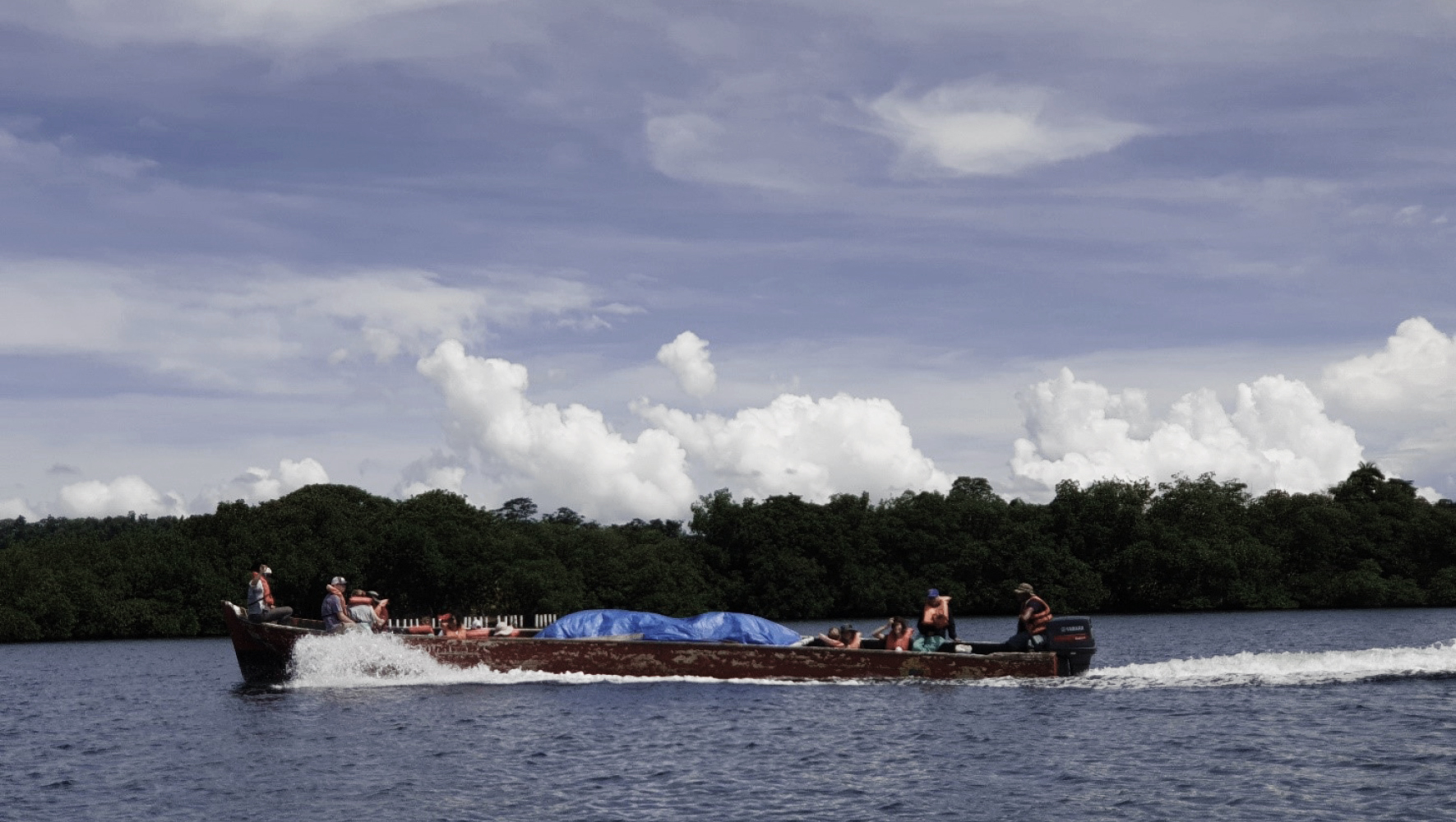
Part 1: The Floating Doctors
Arriving at the Floating Doctors base was very exciting. I had been waiting all year for this experience to start, and after four flights and a boat ride I finally made it. The Floating Doctors base is completely self-sufficient with respect to their infrastructure. We were given a tour of the facilities with friendly reminders to be mindful of water and electricity usage, as well as what gets flushed down the toilets. The Floating Doctors relies mostly on solar power banks to provide electricity to the accommodation and working areas, with a backup generator for essential services. All the drinking and bathing water falls from the sky and is stored in giant bladders and water tanks. The cooks and maintenance staff are all contracted staff from the neighbouring Ngäbe community of Valle Escondido, and their food is sourced from local green grocers and suppliers.
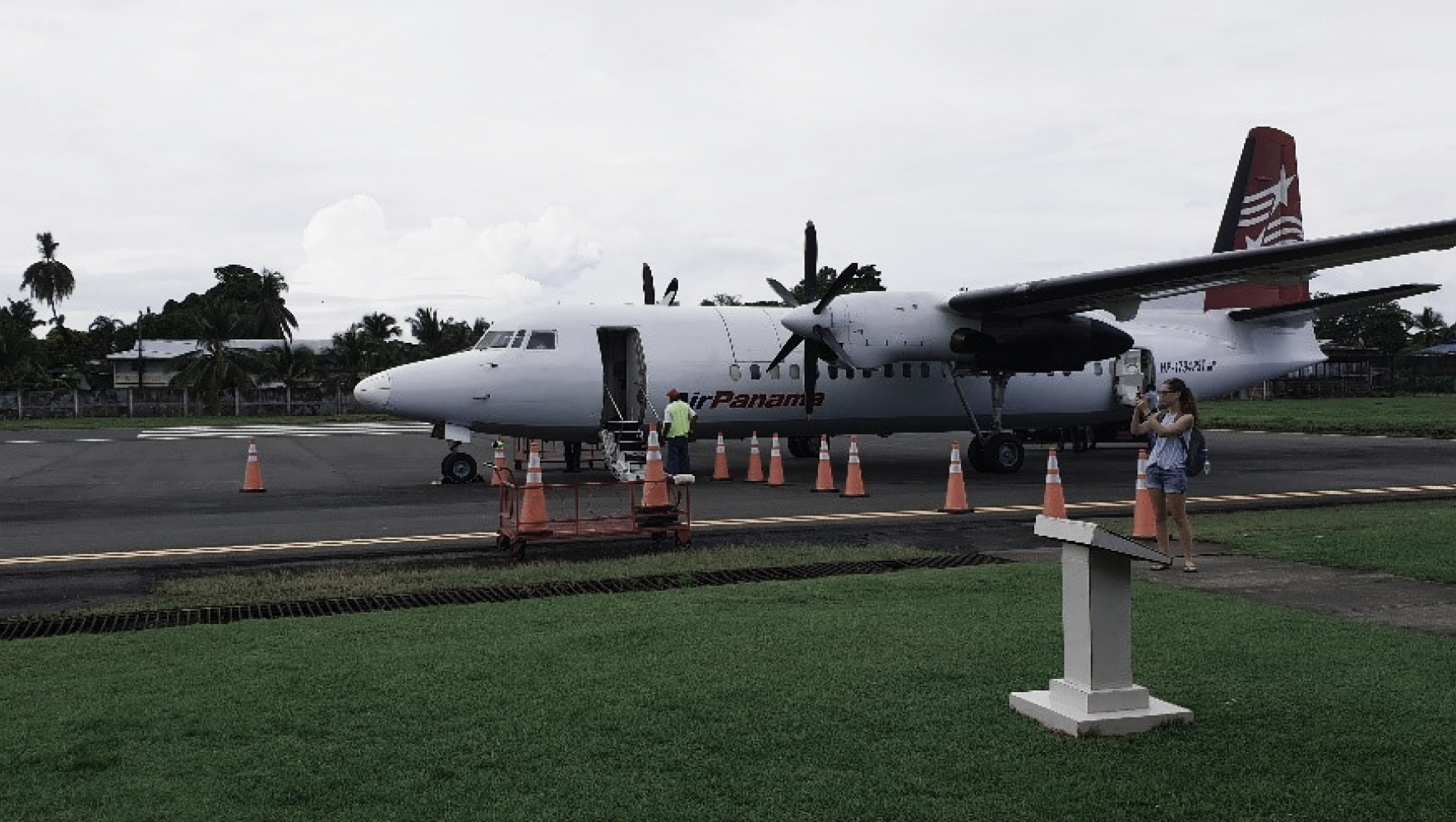
Clinics
The Floating Doctors serve several indigenous communities across the Bocas del Toro region and archipelago. These include single day clinics to the closer communities and multi-day clinics for those that are further away. On clinic days and trips, my time was split working the first half of the day on patient intake and the second part assisting medical provider teams. In either role it was not uncommon to see a whole family in one consultation and this could include up to four generations. Patient intake involved briefly establishing why they wished to see a doctor and then the rest included completing a form which luckily had an English to Spanish script. This form focused on important information not just for the patient, but also about the whole community. The patient record form included vital signs, height and weight, past medical and family histories, maternal health information, contraception utilised by the patient/family, allergies and medications, social history including smoking, alcohol and drugs, as well as how much water the patient drinks, where their drinking water comes from, and the location and type of toilet they use. Finally, this role also included basic tests such as urine analysis, blood glucose, urine pregnancy testing and finger prick haemoglobin.
When working alongside providers with an interpreter I was able to revisit patient histories, examine patients (including ante-natal examinations, point of care ultrasound and ECGs), use diagnostic skills, help formulate treatment plans and prescribe and dispense from the pharmacy. In some cases, patients would need further follow up with referrals to specialists in the Provincial capital of Changuinola or even Panama City. It was always exiting to see if my provisional diagnosis and management plan I had written in my notebook during intake matched the outcome achieved by the provider station.
Clinic 1: San Cristobal
This was my first clinic and I was nervously excited; it was to one of the closest communities for the Floating Doctors. I was a bit worried that my Spanish would be awful (and to be fair it was not great). I started the morning doing intake, and kept my own record of the age and sex of the patient with my provisional and differential diagnosis in case they was a patient that I was able to see as part of a provider team. I learned quickly that there were some common themes surrounding health care needs in these communities. We saw many young pregnant women for antenatal care, lots of dermatological issues, chronic diseases like hypertension and type 2 diabetes and issues caused by the physical environment such as postural hypotension due to dehydration and pterygium from UV exposure. Some highlights from this clinic were learning how to measure biparietal length and determine the sex of a neonate with antenatal ultrasound and diagnosing a 5-year-old with shingles, which unfortunately meant that this child required referral for HIV testing.
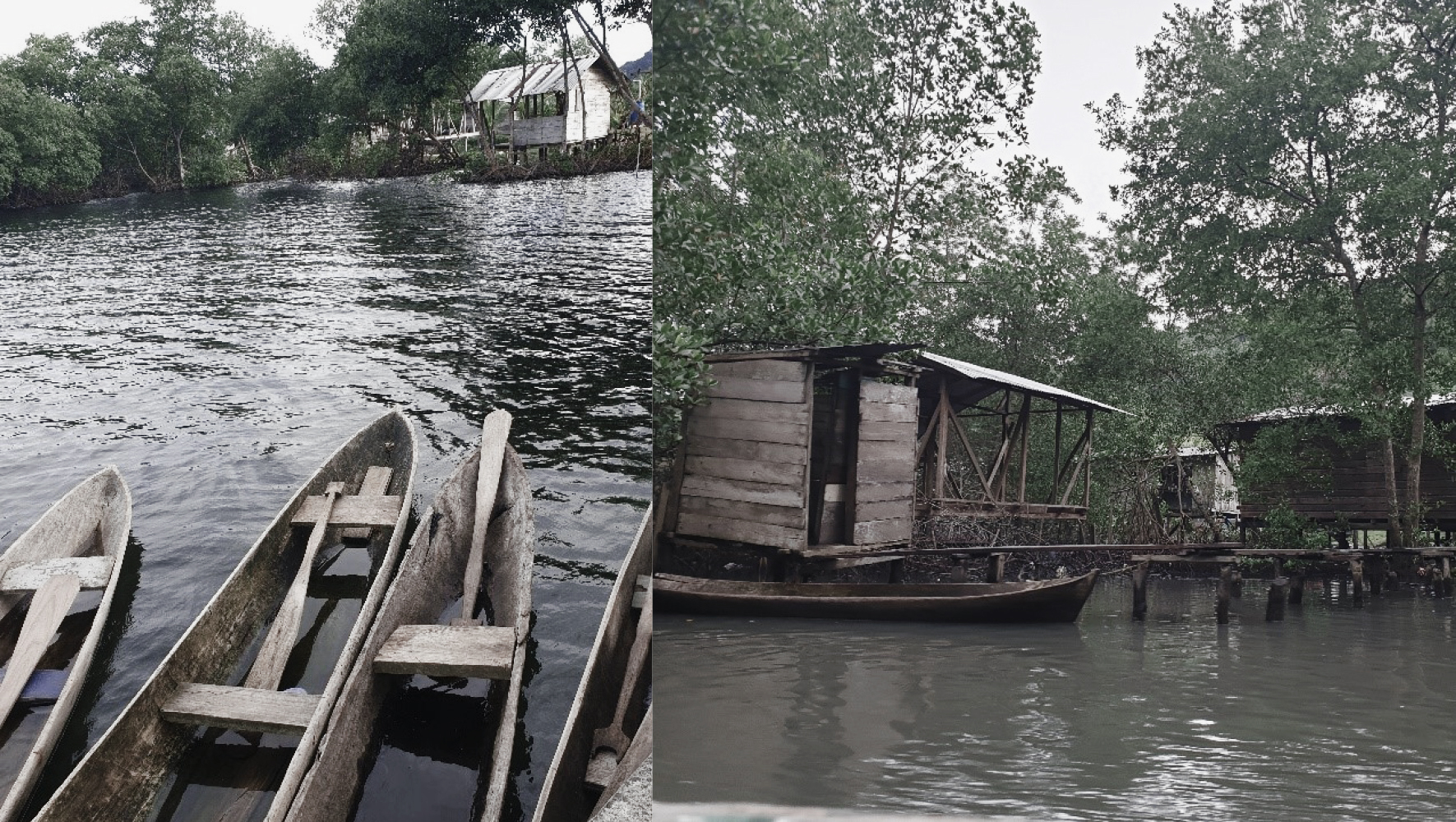
Clinic 2: Tierra Oscura
This community is also very closely located to the Floating Doctors base, and it was a busy day with lots of patients to see as well as a very friendly dog. During this clinic visit, while conducting intake for a young family, it became apparent after looking at growth charts that all 3 of the children had stunted growth. Stunting and wasting are abnormalities in paediatric growth that the Floating Doctors look out for, and why proper intake records are important especially for children. It became apparent that the children in this family were fussy eaters but also that their mother did not enjoy cooking. The whole family including the father were given dietary education and were provided with 2 boxes of rice fortified with protein per child to assist with getting their growth back on the right trajectory. This clinic also involved a lot of chronic disease management for hypertension, type 2 diabetes and osteoarthritis.
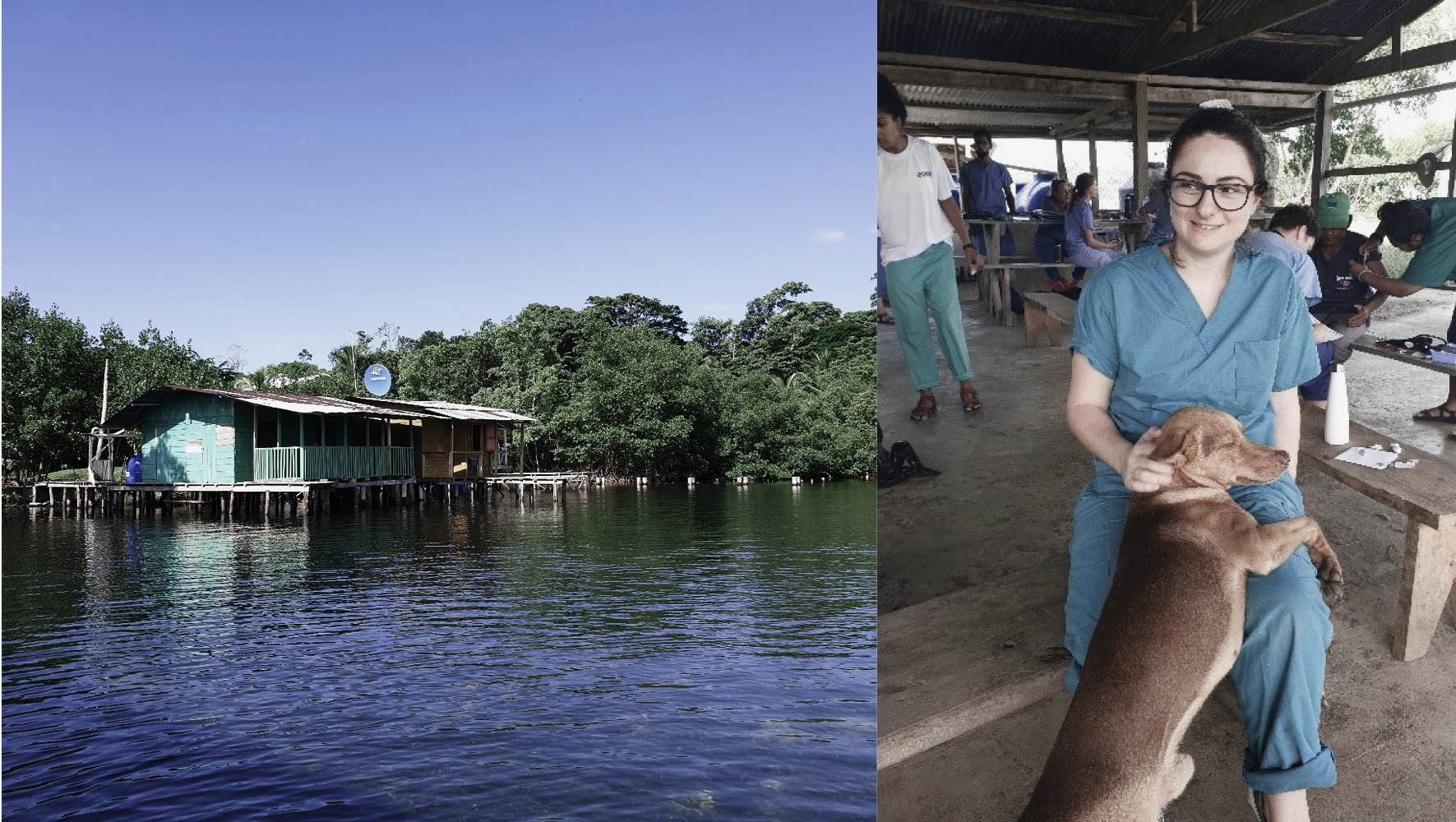
Clinic 3: Rio Oeste
Rio Oeste is a community situated on the mainland, and it is fortunate to have established its own eco-tourism venture with some assistance from the Peace Corp. Rio Oeste is home to the Örebä Cacao plantation and chocolate factory which highlights the production of chocolate by traditional methods and recipes, from the cultivation of the cacao plant right through to the manufacturing of the chocolate itself. As well as offering visitors, including the Floating Doctors volunteers the opportunity to purchase chocolate from their co-op, they also have a canteen that sells traditional lunches of steamed fish, root vegetables and greens. Before arriving in this community, we were forewarned that this is often one of the busiest clinics and that often the patient presentations are complicated. At this clinic I was part of a team who worked up a seven year old whose lifelong symptoms were most likely due to an undiagnosed congenital cardiac defect, and I was asked by the clinical director to present this case at the weekly education session.
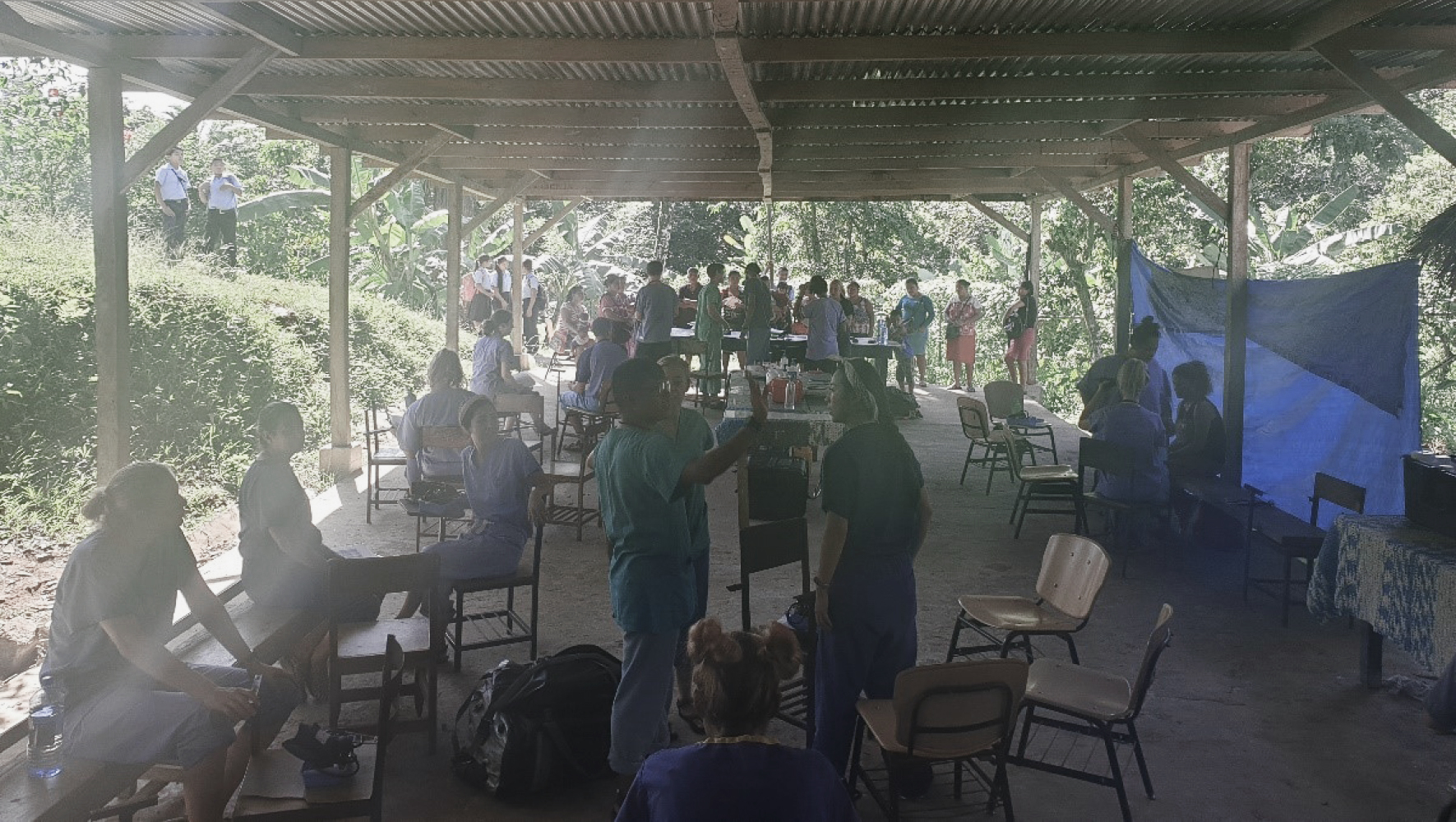
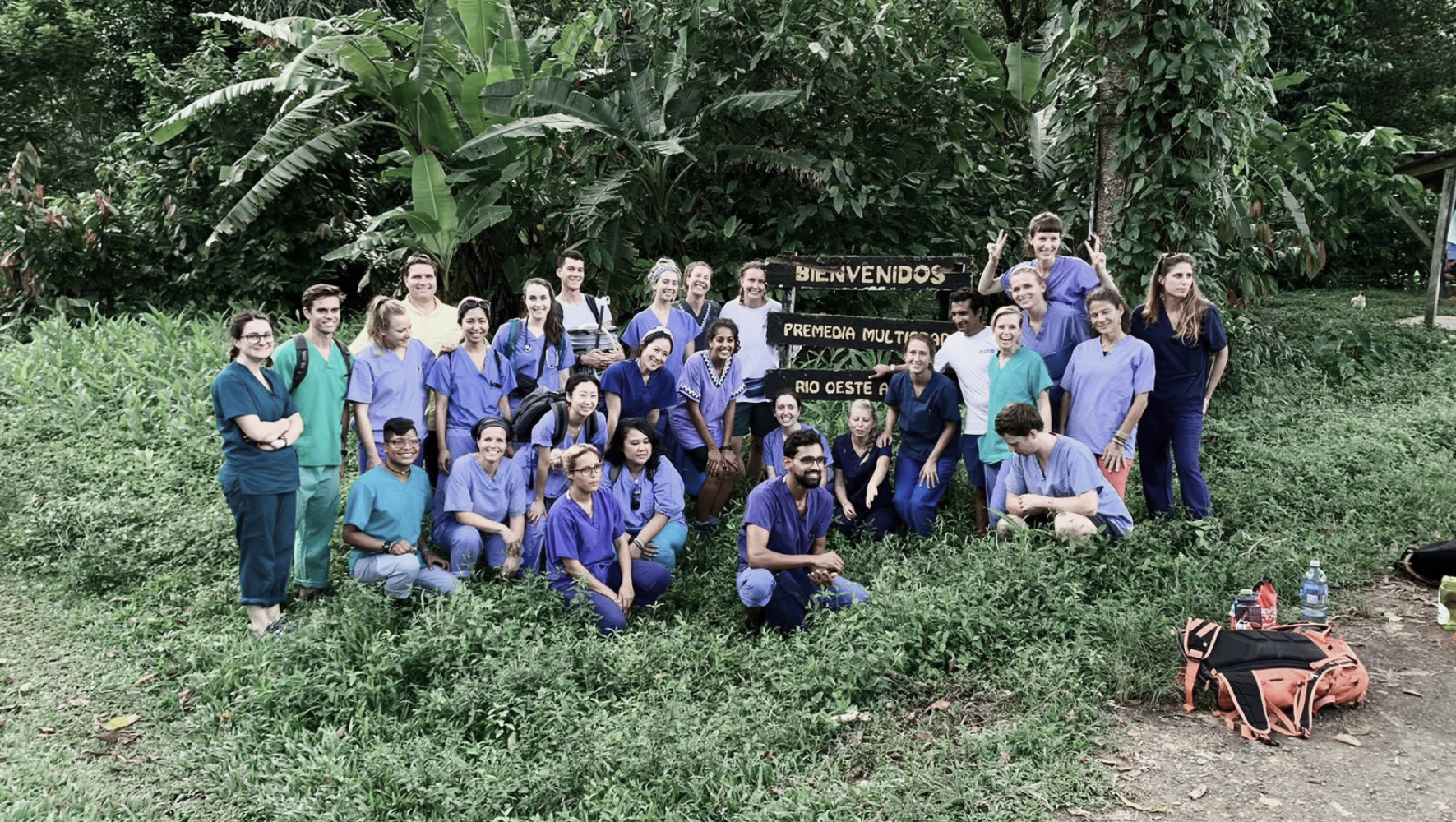
Clinic 4: Multi day at Ensenada
It took almost a 3-hour boat trip across the Baja Azul to get to the community of Ensenada, which is on the mainland and is where the Atlantic Ocean meets the Caribbean. This was the clinic I was most looking forward to, as we would be camping in the community and would be seeing a much larger number of patients over a 3-day period with scope for short term follow up if required. Myself and three others set up our hammocks in the more basic rancho, which had a thatched roof and clay floor that we gave a cheeky name based on a joke from the 12th Man audio comedies. On all the days we were in Ensenada, there was heavy rain fall and I was surprised that the banana leaf thatched roof kept the rain out and our hammocks dry. While I am an experienced camper who has swagged my way around Central Australia, this was my first time sleeping in a hammock and I regret not having one of my new friends film a video of me getting into and out of the hammock for the first time.
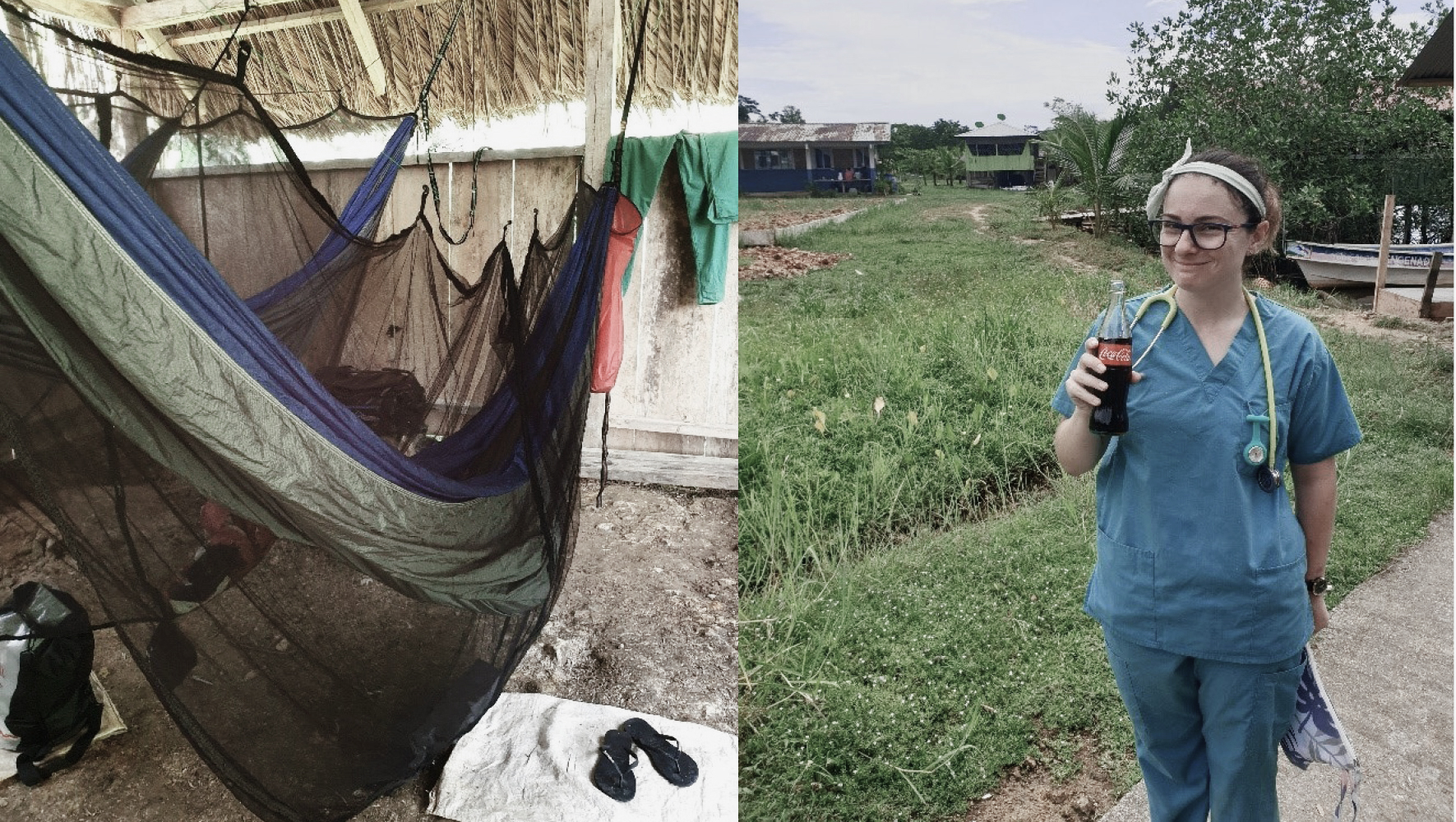
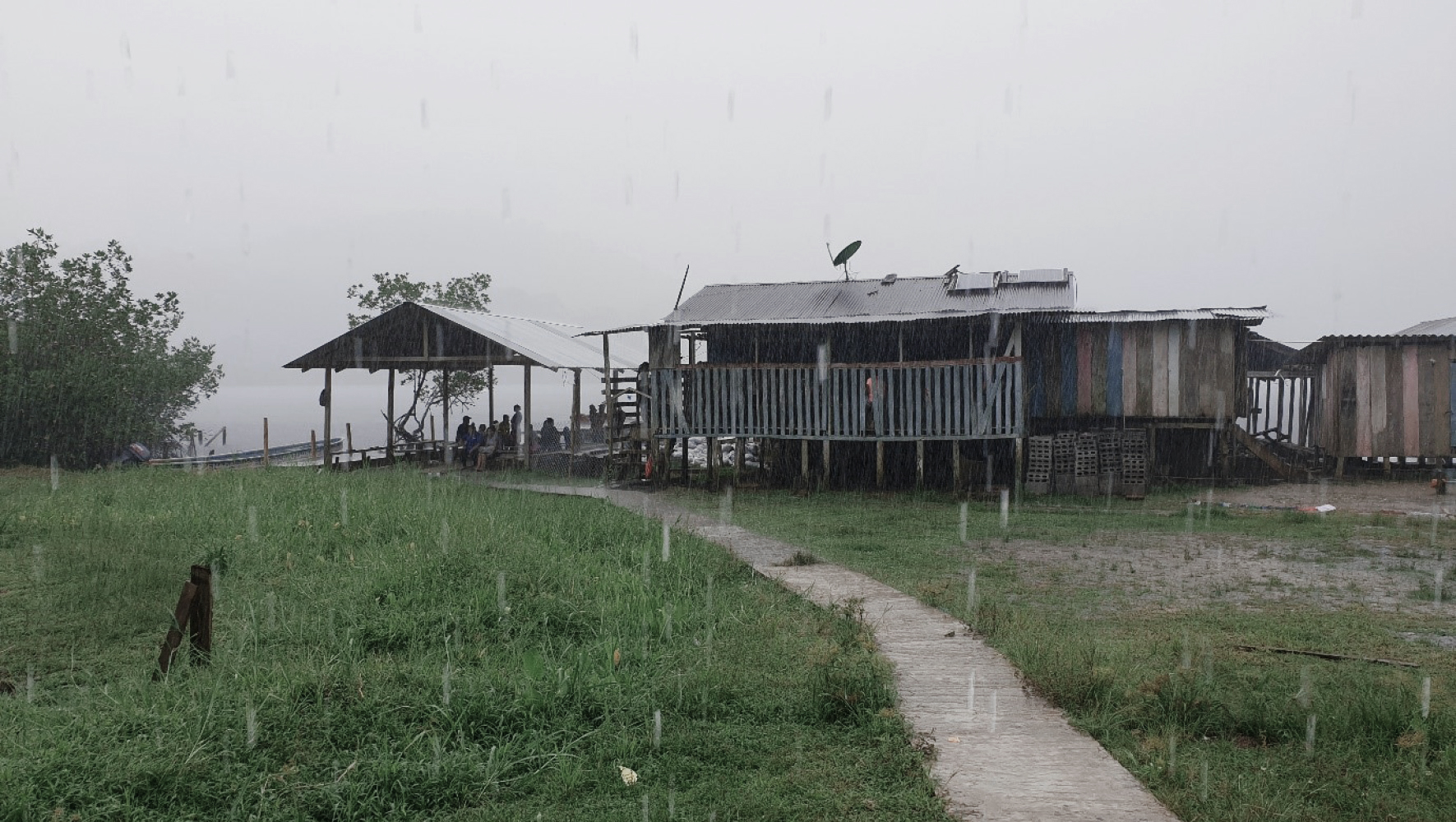 The clinical days in Ensenada were long and each evening I stayed back with the provider teams to ensure the last patients were seen, even if this meant seeing the last one or two patients by the light of a headlamp.
The clinical days in Ensenada were long and each evening I stayed back with the provider teams to ensure the last patients were seen, even if this meant seeing the last one or two patients by the light of a headlamp.
Like the other communities, Ensenada also has many chronic disease patients and young expectant mothers to look after. I did the intake for a young pregnant woman who was 32 weeks pregnant, but had not yet had any antenatal care. Based on her last menstrual period, I calculated she was 40 weeks and 4 days gestation, and the senior doctor advised her to go present to the closest hospital ASAP as she could have her baby at any time. The next morning the team awoke to lots of yelling for help; this mother was having her baby. Two midwives and a doctor spent their morning hiking through the jungle, and delivering the healthy baby girl. While in Ensenada, the teams provided much maternal and sexual health care to many women of all ages, including underage expectant mothers and older women such as a patients diagnosed with Pelvic Inflammatory Disease.
On the final day in Ensenada, after all the excitement of the not so unexpected arrival, the volunteers were given an hour to wander down to a very special beach for a swim before packing the boats for the long journey back to base. This beach is usually for locals only, but over the years the Floating Doctors has been granted the privilege of being able to enjoy its beauty. For me, it was my first swim in the Atlantic Ocean and a great way to finish up my last Floating Doctors clinic.
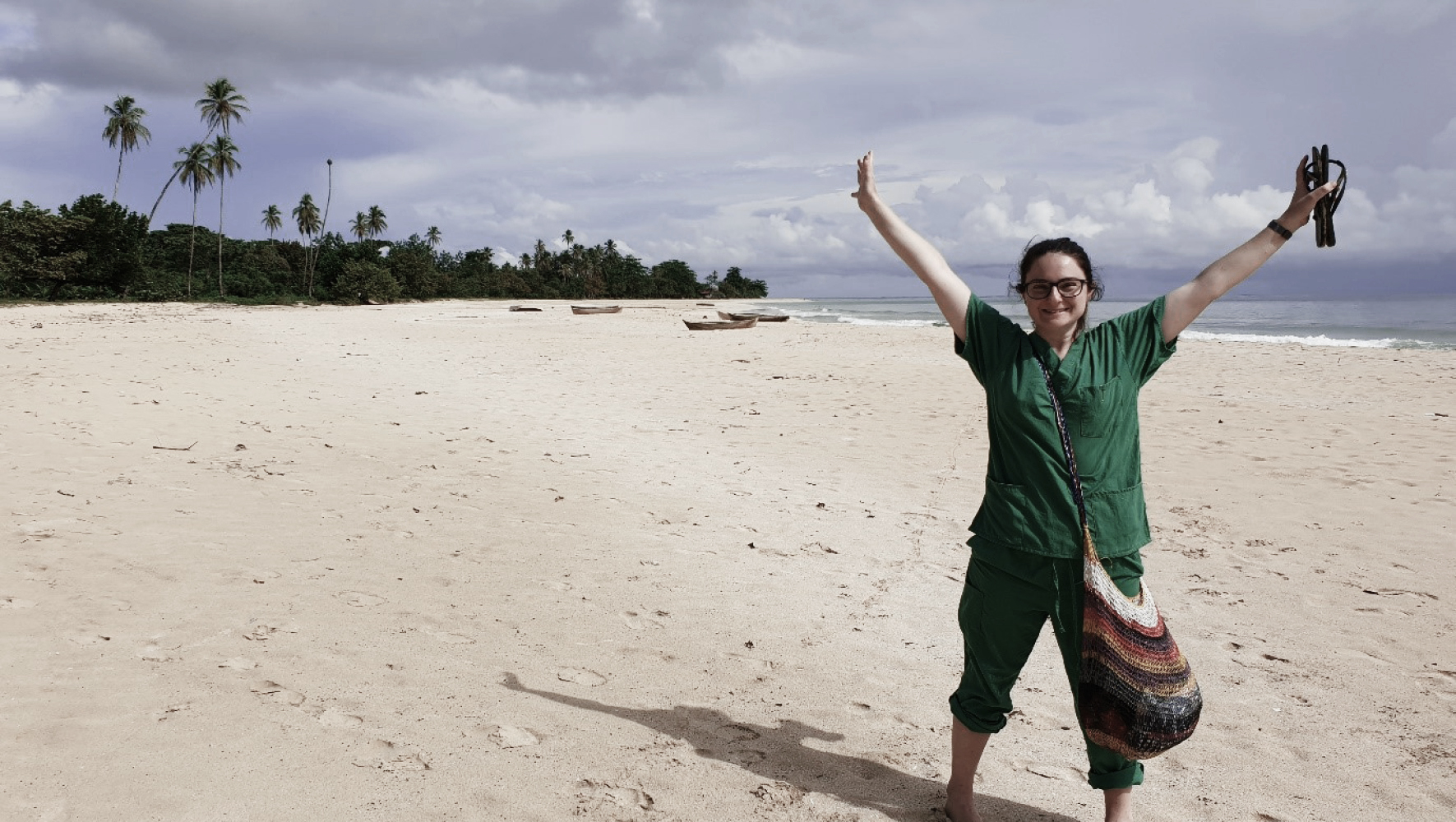
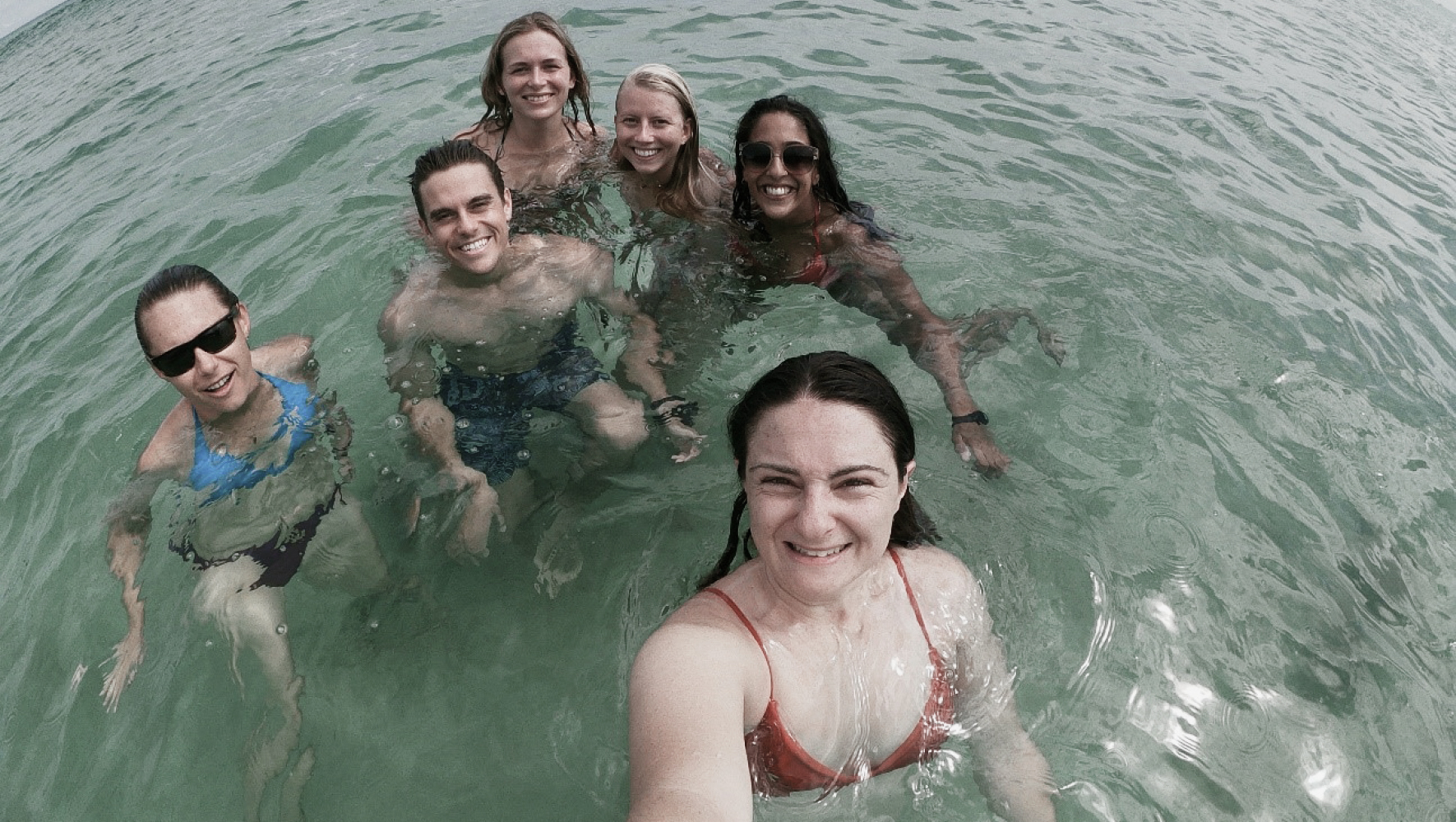
On base tasks and activities
When we weren’t attending clinics, there were many on base tasks to do. In the weeks prior to my arrival, the Floating Doctors had received a very large donation of medical supplies. This was a shipping container of boxed donations and the contents of the boxes were unlabelled and contained mixed items. One of the tasks was to go box-by-box, and sort the items based on what they were and what they could be used for. The items ranged from predictable things like syringes, needles, suture material, dressings, airway equipment, toothbrushes, speculums, surgical trays and urinary catheters. There were other items too that were on donated to the local nursing home such as pyjamas and incontinence pads.
Another task was reconstituting the clinic bags between clinic visits, so that they were ready to go for the next clinic or for emergencies. It made me appreciate the importance of an organised logistics system for an organisation such as the Floating Doctors, and the importance of having things ready to go in case of an emergency.
There was also the on base clinic which I was lucky enough to be a part of, where follow up care can be attended to at the end of the week for the more closely located communities, as well as for emergencies who could present themselves to the base at any time.
The final on base task which is vitally important is the coding and collating of the patients records, which are then scanned and stored for the purpose of collecting and analysing epidemiological data for the communities and the region. This is so the Floating Doctors can provide targeted preventative health care based on epidemiological data, and aids the organisation in developing community infrastructure projects in areas like sanitation, as well as targeted health education programs, and developing educational/induction materials for volunteers.
At the end of the week, the staff and volunteers would have a case rounds session based on any interesting and educational cases seen during the week of clinics. These were similar to how grand rounds would work in a hospital. I was afforded the privilege of presenting a case I encountered in my first week of a young girl with lethargy and intermittent cyanosis, who was yet to be formally diagnosed with a congenital cardiac disease. As there were a number of more junior medical students from other countries in the group, I took the group through the case in an interactive fashion going through important parts of the history and examination and a stepwise approach to interpreting an ECG, as well as how I would request a specialty consult for this patient in an Australian hospital using the ISBAR approach. I also discussed the pathophysiology of such conditions and likely management options.
It was not all work and no play while on base. In the evening once all the equipment was packed away the group would sit on the jetty and read, do yoga and swim as a relaxing activity before dinner. After dinner people would play cards or other games.
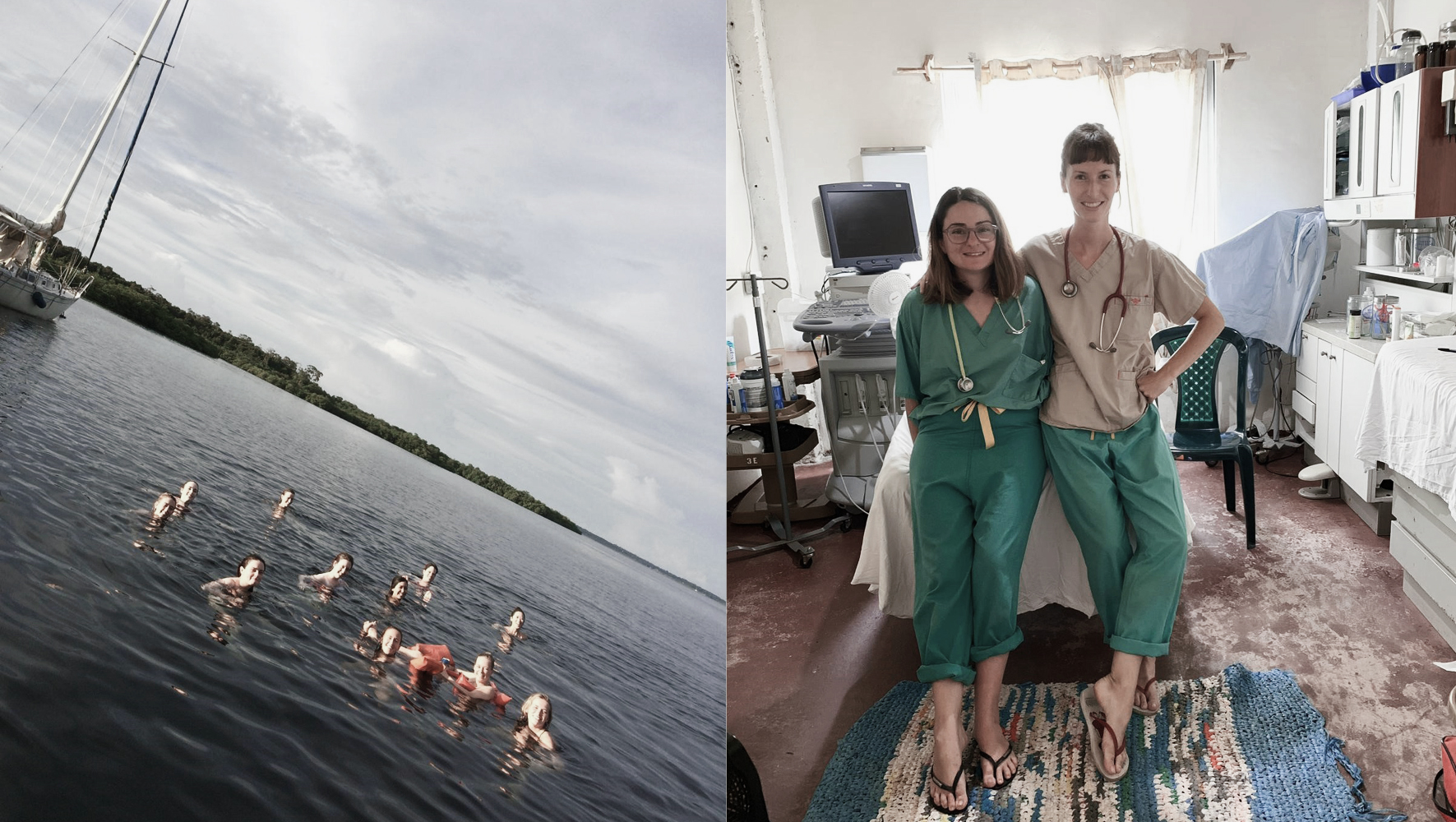
Exploring the Archipelago
The weekends while with the Floating Doctors were my own, and I chose to spend mine at an eco-lodge on Isla Solarte which had a pool with an incredible view, and also was somewhere where I could read my books and finish my final two university assignments. I also had a boat tour out to the Zapatilla Islands which was an adventure which included cruising past an island inhabited by sloths which was a big tick on for bucket list.
Part 2: Medicine in the Provincial Capital with Dr Anne and her family
It was a small adventure to travel from Bocas Town to the provincial capitol of Changuinola on the mainland to meet Dr Anne. With my very basic Spanish, I had to get a Ferry to the Port of Almirante and then find the correct bus to take me to Changuinola with instructions to have the bus driver drop me off just after the Changuinola bridge (which is not an official bus stop) to find her house, which would be my home for the next three and a half weeks. Dr Anne who is the director of the provinces HIV program is somewhat of a local celebrity in Changuinola, she is often stopped in the street, talks about local health issues on provincial radio, has VMO privileges at the local hospital, teaches bible study at a local church and runs an afterhours private GP clinic. I asked her how she managed to do so much and she told me that there are so few activities and attractions in Changuinola that she prefers to keep busy with the things that are important to her, which is providing healthcare to the local community and serving her church and family.
HIV and CTARV
In recent times HIV has become increasingly prevalent in the Bocas del Toro region of Panama, especially for the indigenous Ngäbe population. Most concerning is that while HIV is slowly becoming less prevalent around the world (broadly speaking), the numbers of new cases in Panama and especially Bocas del Toro continue to rise. While I was in the clinic, there was a range of HIV patients, of which some had been managing HIV for many years, as well as those with new diagnosis. Some patients were old while others were young children too. On most days in the morning before arriving at the clinic, Dr Anne and I would first stop by the hospital to check in on admitted HIV patients. Some of these were patients with a new diagnosis. Others were patients unfortunately who had AIDs defining illnesses and were receiving treatment which may or may not save their lives, but who were likely in the terminal phase of their disease. One such patient had both TB and histoplasmosis on a background of poor antiviral treatment compliance, likely due to the rurality of her community. Another patient was a toddler whose mother had recently died likely from HIV/AIDS, with a recent HIV diagnosis.
In the clinic I learned about the questions required when taking a history from both newly diagnosed and long-term HIV patients and examined the patients. There were some good outcomes, such as a man who had recently restarted antiviral therapy who months prior had lost so much weight that in the photograph’s Dr Anne showed me, he looked like a WWII POW. At his follow up appointment, he had regained 20kg and appeared much better. With this patient’s permission I used his deidentified “before and after” photographs in a presentation on HIV that I created for the Floating Doctors.
When the founder and director of the Floating Doctors organised the alternate placement with Dr Anne, he asked me if I would be able to create an educational resource about HIV and HIV in Bocas del Toro that the Floating Doctors could use. I assisted Dr Anne in collating some final demographic data about HIV patients in the region, and used this in a PowerPoint presentation which I have been told has been in use since the start of the new volunteer year. This presentation highlighted the stark difference in prevalence of HIV between indigenous and non-indigenous Panamanians across the region. Of active CTARV patients, 70% were male and 93% were indigenous. The literature that examines this issue considers the rurality of the indigenous communities as well as differences of sexual practice and cultural attitudes towards sexual practice and contraception, to be a driving factor in the steady increase in HIV prevalence in Ngäbe communities in Bocas del Toro.
CTARV (translates to the antiretroviral clinic) are focussed just as much on preventing the transmission of HIV, as they are in treating the disease. In between seeing patients, I put together show bags for their upcoming HIV awareness event, which I unfortunately missed as it was scheduled for after my return to Australia.
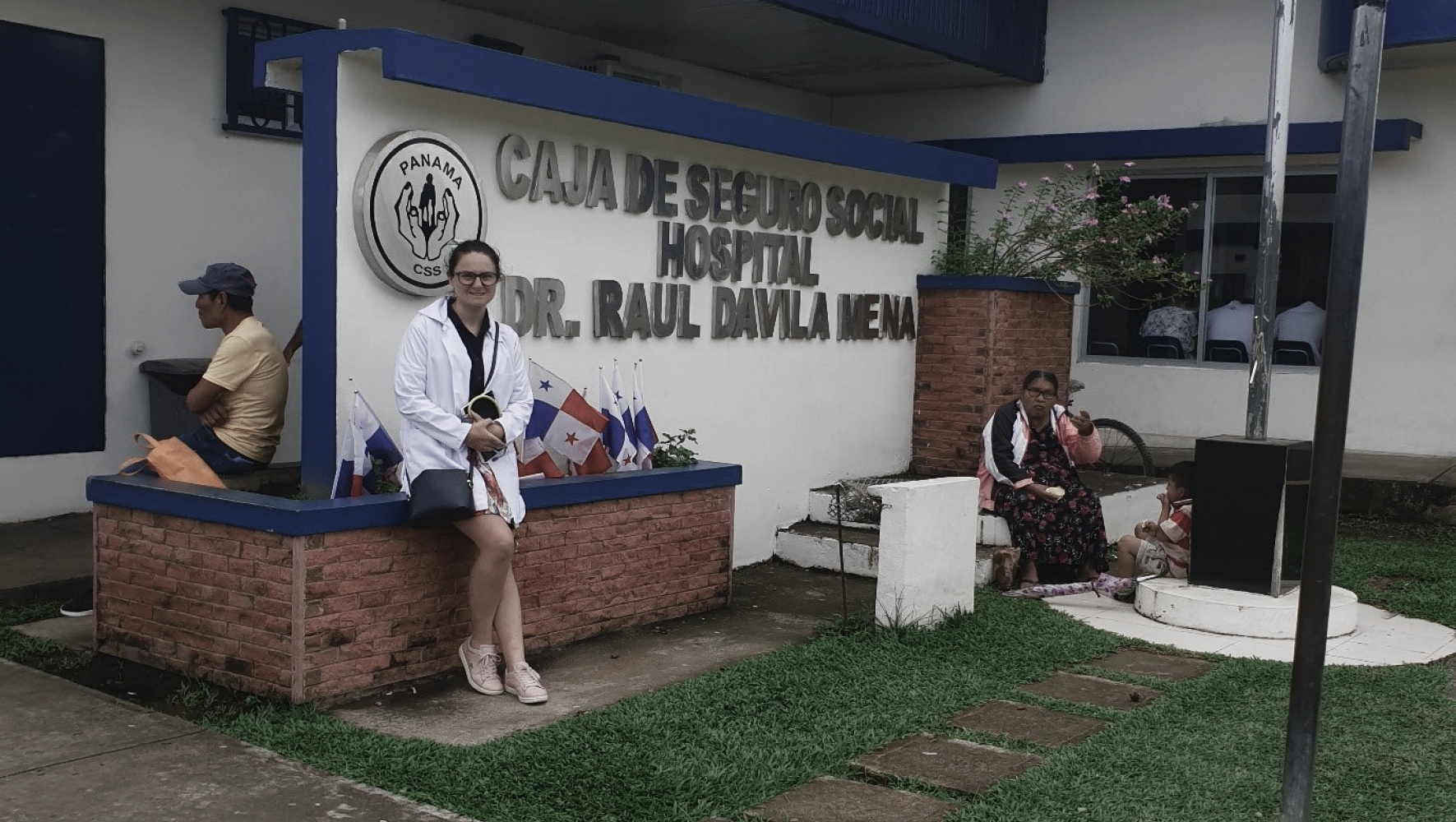 Night shifts at the Changuinola District Hospital
Night shifts at the Changuinola District Hospital
One of Dr Anne’s daughters is a Senior House Officer (like an RMO) at the provincial hospital in Changuinola. She kindly invited me to join her on some overnight shifts in the Labour and Delivery Ward. This is a very busy part of Changuinola hospital, with many birthing mothers on the unit at any one time. There are some striking differences in how labour is managed in a rural Panamanian hospital when compared with rural and regional hospitals in Australia. For example, at this hospital none of the birthing mothers were offered any kind of pain relief during labour. There were not enough anaesthetists to offer any epidural anaesthesia. The only mothers to be offered analgesia and anaesthesia were those who required a caesarean section. This went for all birthing mothers, no matter the circumstance. Most women were able to power through childbirth and a good number had already had many other children before. However, there was a very sad case where a woman from a remote community had stopped feeling her baby move and had waited a day before telling anybody and then had a 24-hour journey into hospital. She had all the signs of undiagnosed/untreated gestational diabetes and using calculations based on last menstrual period was well post-dates. This woman unfortunately needed to be induced in order to deliver her macrosomic still born baby, which led to a shoulder dystocia and there was no analgesia available to her. This is a memory that will stay with me for some time to come.
There are other memories that I will reflect on to remind me of how fortunate we are in Australia with regards to accessing maternal health care. On these night shifts, there were three mothers who had incomplete maternal health screening, who late in pregnancy had been diagnosed with HIV and/or Syphilis which meant that there were extra precautions and procedures during birth for the safety of mother and baby. Such things are thankfully much less common in Australia.
Despite this sad story there are more happy stories than sad during this part of my elective experience. I let a young mother squeeze my hand while in labour and was rewarded with having the mother ask me to write down my first and middle names so that she could have the spelling correct for the name of her new daughter. There is now a baby in a rural community in Panama who shares my name.
General Practice
I was lucky enough to join Dr Anne at her own after-hours general practice clinic. Here, I was able to both observe and participate in primary care medicine. Most of the presentations to the clinic were similar in nature to what is seen in general practice in Australia. There were a lot of upper respiratory tract infections, though most here in rural panama are treated as though they are bacterial with intramuscular antibiotics as opposed to in Australia where most respiratory infections are considered viral and treated with supportive care. There was also a lot of family planning type consultations for Depo Provera injections as well as antenatal care. Dr Anne also saw and treated a lot of dermatological conditions and infections and it was a good experience to see common skin conditions and how they present on darker skin tones, as this is not always shown in textbooks or lectures. Dr Anne also let me conduct cervical screening testing and suture small skin lacerations.
When not working in Changuinola
To be honest, there is not too much on offer for a tourist in Changuinola, nor for those who live there. My hosts made sure that I was able to experience all that the area had to offer including going back to Almirante for the best ceviche in Panama, visiting a local resort to swim in a pool with a great view of the archipelago, dining at local restaurants including Domino’s Pizza and visiting a banana packing station. On a public holiday, I was lucky to take a day trip across the border to Porta Viejo in Costa Rica with Dr Anne’s Daughters and their friends for a day at the beach, where I unfortunately stubbed my toe which required some running repairs and some interesting Spanish/English interactions in a pharmacy.
I had hoped to see a baseball game at the stadium as baseball is one of the most popular sports in Panama, and was told the Bocas Tortarugas (turtles) are a particularly good team. Unfortunately, it was not baseball season and the new stadium was not yet built. I did make sure to buy a Tortarugas cap and shirt to take home though.
My visit also coincided with back-to-back weekend celebrations for Panamanian independence. I was invited to join the street parade as part of the MINSA (Ministry of Health) contingent. The parade was fantastic with many marching bands and dancers and singers in traditional dress and stalls set up along the roadside offering Panamanian snacks such as empanadas.
Part 3: A whirlwind Panama City experience
With my one spare day in Panama City, on my way home I was lucky to be given a whirlwind tour by Dr Anne’s other daughter (a dentist). She took me to the harbourfront and encouraged me to eat local street snacks such as snow cones topped with condensed milk and mangos dressed with salt and vinegar. She also organised a drive to a look-out which overlooks the basin that ships traverse as part of the canal, and then to the Panama Canal visitors centre which was yet another bucket list item ticked off.
Overall, I had an interesting and varied experience in Panama even if it was not what I had initially planned. I went over there with an open mind and said yes to any clinical and cultural opportunities that I was offered. For anyone interested in primary care medicine such as general practice who want to work in a rural environment, then I could not recommend the Floating Doctors enough. It really was general practice in the jungle. My time in Changuinola also gave me clinical experience in a regional setting where access to clinical resources is also more limited than many regional centres at home.
 Facebook
Facebook
Like and follow us on Facebook to keep up to date with all our student offers, events, competitions and more.
